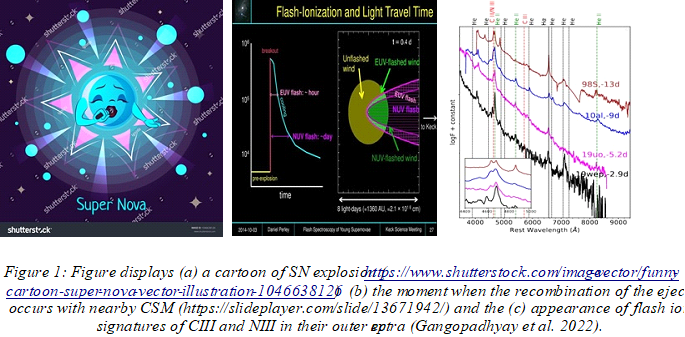A team of scientists have deciphered the physical characteristics of a rare class of supernovae called Type Ibn Supernovae (SNe).
Type Ibn supernovae are a rare class of stripped-envelope supernovae interacting with a helium-rich dense circumstellar medium (CSM). These SNe are unique and essential because they help to explore about the typical density, velocity, and composition of the nearby SN environment. They are more luminous than normal supernovae (SNe), which are huge stellar explosions releasing a humongous amount of energy. SN 2019wep is one of the very rare SNe for which a long-term monitoring campaign was launched to decipher the physical characteristics following detection of flash ionisation signatures. This is a unique study where the SN properties are probed along with environmental studies.

An international team of researchers from Aryabhatta Research Institute of Observational Sciences (ARIES), an autonomous institute under the Department of Science & Technology, Government of India, Hiroshima University, Japan, and Las Cumbres Observatory, USA, deciphered the physical characteristics of SN 2019wep.
The researchers have identified rare signatures of flash ionisation in the very early spectra of SN 2019wep. The rare signatures hint towards a special class of very hot and massive stars in advanced stages of stellar evolution, having depleted hydrogen, called Wolf-Rayet progenitor star. The early signatures of flash ionisation, especially Helium, were previously traced in some SNe mostly due to the CSM recombination. The team led by Anjasha Gangopadhyay, a former research scholar at ARIES (presently Assistant Professor at Hiroshima University) and Kuntal Misra, scientist at ARIES, traced the unique Carbon and Nitrogen signatures in the optical waveband deciphering the physical characteristics.

The SN Ibns tracked in the research published in The Astrophysical Journal is a peculiar one, which shows a transitioning nature and residual H-alpha. In general, SN Ibn are expected to show He features only, however, this is a unique case where we can see some remaining Halpha in the SN spectrum. The researchers said that SNe Ibns are typically short-lived, and dedicated follow-up campaigns will help unravel the mysteries of the unique members of Type Ibn class and their ancestors.
Publication: Anjasha Gangopadhyay et al. 2022 ApJ 930 127
Publication Link: https://iopscience.iop.org/article/10.3847/1538-4357/ac6187
For more details, please contact: Anjasha Gangopadhyay (anjashagangopadhyay[at]gmail.com), Kuntal Misra (kuntal[at]aries.res.in).


























